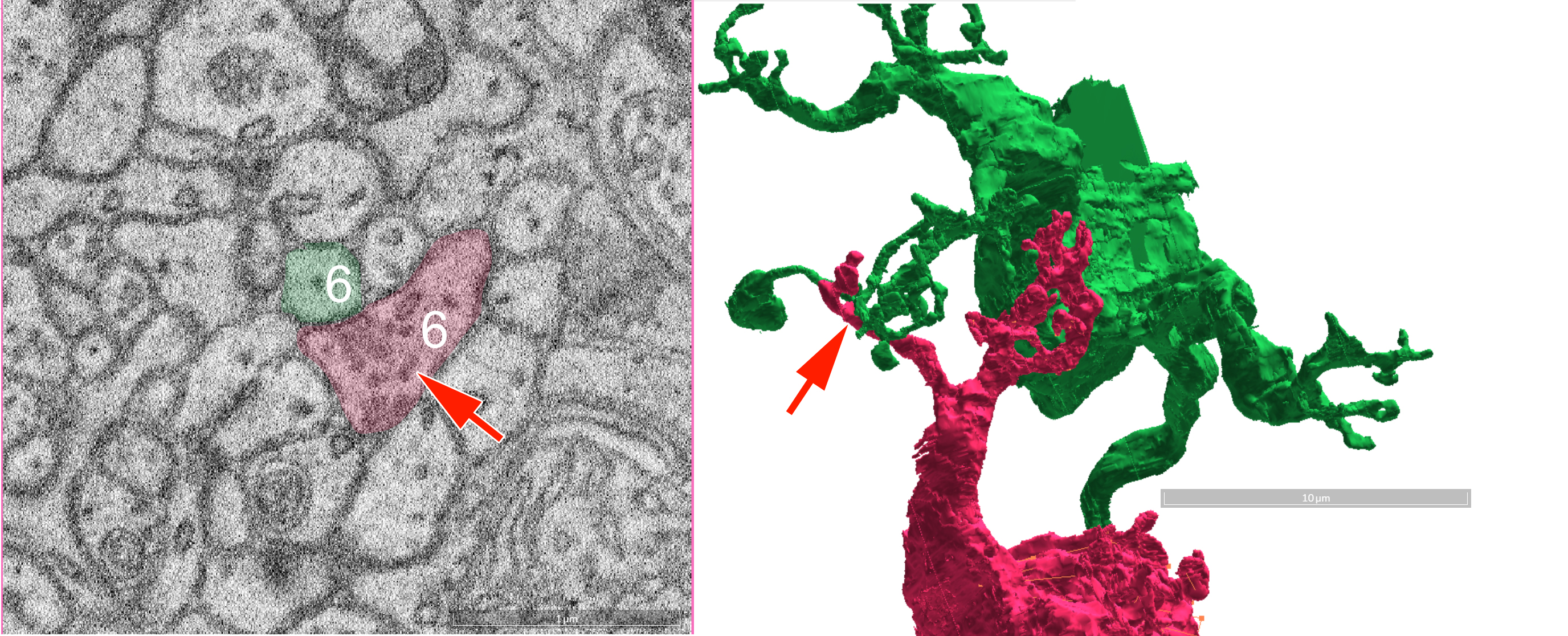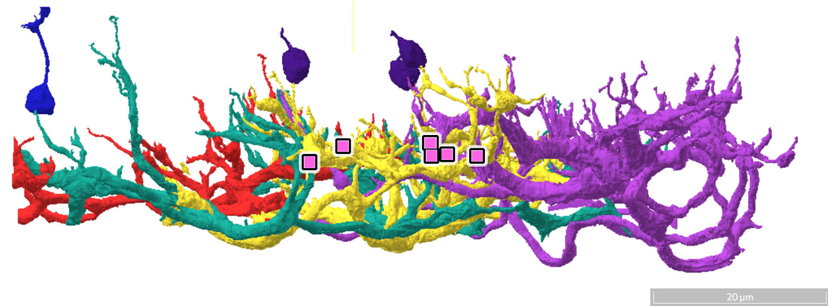Tiered Mentoring ProgramConnect the Dots: Mouse Edition - Exploring the Circuitry of the RetinaDr. Jordan Renna and Laurence Johnson |
 |
 The Renna lab uses serial block-face electron microscopy (SBEM) to study the neural circuitry of the retina. This thin layer of tissue is located in the back of the eye and contains complex networks of cells that are responsible for the processing of visual information prior to its transmission to the brain. Our lab is interested in identifying the synaptic structures and neural circuits that give the retina its highly specialized processing capabilities.
The Renna lab uses serial block-face electron microscopy (SBEM) to study the neural circuitry of the retina. This thin layer of tissue is located in the back of the eye and contains complex networks of cells that are responsible for the processing of visual information prior to its transmission to the brain. Our lab is interested in identifying the synaptic structures and neural circuits that give the retina its highly specialized processing capabilities.
SBEM involves imaging a fixed block of retinal tissue, whose surface, or ‘face’, is scanned with an electron microscope before being sliced off in nanometer-thin layers using a microtome blade. This process is repeated until the whole block is sectioned, at which point the images are compiled into a z-stack. SBEM technology gives scientists the ability to create three-dimensional models of circuits or individual cells and identify synaptic structures by visualizing cellular components at the nanometer scale. The use of this technique aims to inform our anatomical knowledge of the retina and provides insight into the structural intricacies that are yet to be fully understood.
This is a computer-based research project in which you will trace neurons, identify synapses and neuron connections, and disentangle neural circuits of the retina. This is NOT a wet-lab mixing up chemicals, using a microscope, type research experience. You can work on your own time in the lab or remote. Students should be self-motivated and independent.
 Opportunities for Students:
Opportunities for Students:
- Gain experience using computer-based neuron tracing software
- Learn how to identify neuroanatomical structures and trace cells and circuits
- Attend weekly lab meetings
- Learn more about how the visual system functions
Required Experience:
No previous lab experience is required. We will be happy to teach you everything you need to know!
Time Commitment:
We expect students to dedicate at least 9 hours a week to this project.
